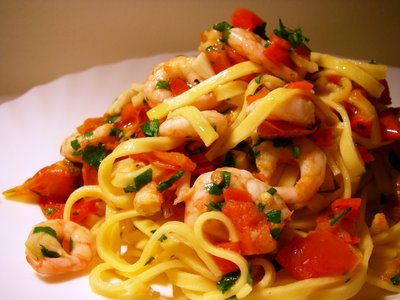But then there are weekends like this one. Brisk November Saturdays when the sun shines bright and low from the South and the wind blows the last of the golden leaves to the ground; days when Portobello Road is packed with rosy-cheeked shoppers, wrapped in scarves and flushed with mulled wine. We spent yesterday afternoon browsing the market there for the ingredients for an autumn dinner party: fresh rosemary, squash, cranberries and a couple of bottles of Beaujolais Nouveau.*
 Portobello Road, in the Notting Hill neighborhood of West London, ranks among the world's most famous markets. The street itself dates from the eighteenth century; it was named after the 1739 English victory at Puerto Bello in New Granada (modern Panama) during the unforgettably named War of Jenkins' Ear. But it was little more than a two-track country road through fields and farms until the 1840s, when wealthy Londoners began to move west and colonize Notting Hill. An unsuccessful Hippodrome which had flooded and closed in 1837 was built over with houses, its tracks forming the curving "crescents" that characterize the area today. In 1864, Notting Hill's conversion from rural to urban area was completed with the construction of the Hammersmith and City railway line, running right through Ladbroke Grove. The beautiful, glowing terraced houses in pastel colours sprang up in the later 1800s to accommodate the newcomers, who also demanded supplies of fresh fruits, vegetables, meats and fish for their elaborate multi-course Victorian dinner parties. The northern end of the road housed more modest shops and markets, serving the needs of the substantial numbers of domestic servants and construction workers who followed their masters west.
Portobello Road, in the Notting Hill neighborhood of West London, ranks among the world's most famous markets. The street itself dates from the eighteenth century; it was named after the 1739 English victory at Puerto Bello in New Granada (modern Panama) during the unforgettably named War of Jenkins' Ear. But it was little more than a two-track country road through fields and farms until the 1840s, when wealthy Londoners began to move west and colonize Notting Hill. An unsuccessful Hippodrome which had flooded and closed in 1837 was built over with houses, its tracks forming the curving "crescents" that characterize the area today. In 1864, Notting Hill's conversion from rural to urban area was completed with the construction of the Hammersmith and City railway line, running right through Ladbroke Grove. The beautiful, glowing terraced houses in pastel colours sprang up in the later 1800s to accommodate the newcomers, who also demanded supplies of fresh fruits, vegetables, meats and fish for their elaborate multi-course Victorian dinner parties. The northern end of the road housed more modest shops and markets, serving the needs of the substantial numbers of domestic servants and construction workers who followed their masters west.During the twentieth century, Notting Hill became considerably less fashionable, and the huge houses built for families with armies of servants were divided up into small and often grotty apartments. By the 1950s, it was considered one of the most down-at-heel parts of London, and was home to a large West Indian immigrant community. In 1958, Notting Hill was the scene of Britain's first race riots, sparked by a confrontation between the fascist British Union and some of the area's black residents. The Notting Hill Carnival, which still celebrates Caribbean traditions and the multi-ethnic nature of the neighborhood, was conceived as a response to the rioting but was a site of further violence at various times during the 1970s. In the 1980s, though, upper middle class families began to reclaim Notting Hill, beginning its restoration as one of London's fashionable areas. Now, the Portobello Road market and the swanky shops on Westbourne Grove are major tourist attractions as well as the source of fancy food, clothes and jewelry for the locals. As well as the aforementioned dinner party ingredients, we found an ultra-hip vintage German army jacket for Tam and some Christmas presents for the folks back home (who will just have to wait and see).

Sunday afternoon proved to be no less sunny and picturesque. After a quick stroll through Ravenscourt Park and an afternoon half-pint at The Seven Stars, it was clear that this weekend we would be in need of no culinary comfort whatsoever! Relieved of the mantle of spirit-lifting, fall food has the freedom to be brighter, spicier and more delicious. To match the bracing day, some strong, fresh flavors, inspired by the "blushed" tomatoes we bought from a Greek olive vendor during our delightful perigrinations.
*Le Beaujolais Nouveau est arrivé is the mantra every third Thursday in November. It's not necessarily the perfect wine pairing for turkey, but the happy confluence of the release of the first Beaujolais of the year and the Thanksgiving holiday just one week later is - we think - reason for careful holiday menu planning so as to include some appropriately grateful Beaujolais glugging. Fun fact: along with Champagne, Beaujolais is the only wine for which the grapes (in this case, Gamay) must be picked entirely by hand.

Linguini with Spicy Shrimp, Blushed Tomatoes and Double Garlic
This recipe is simple, but if you take care with it and use really good ingredients it is truly delicious. And, yes, however spicy, linguine is the source of some good comfort.
1/2 lb linguine fini
Water for boiling
3 tablespoons extra-virgin olive oil, preferably a good, fruity type
3 cloves garlic, roughly chopped, and 1 small clove very finely chopped
1/2 small hot red chili, chopped, or 1/2 teaspoon crushed red pepper (or to taste)
1/2 cup "blushed" tomatoes,** chopped
1/2 cup white wine
1 cup peeled shrimp
1/4 cup chopped fresh parsley
Juice of 1/2 lemon
Salt and freshly ground pepper
Bring plenty of heavily salted water to a boil in a large pot. Add pasta and cook until al dente. Drain pasta, reserving 1/4 cup of the water.
Meanwhile, heat 1 tablespoon of olive oil in skillet over medium high heat until hot but not smoking. Add roughly chopped garlic and saute for 1 minutes. Add pepper and saute another minute. Add tomatoes and saute another minute. Add white wine and pasta water and boil to reduce slightly. When liquid is reduced, add shrimp and cook just until pink, about 1-2 minutes depending on their size. Turn off heat and add parsley, finely chopped garlic and lemon juice, and season with salt and pepper.
Toss pasta with sauce and remaining 2 tablespoons of olive oil. Serve immediately.
Serves 2; can be doubled.

**Blushed tomatoes are partially sundried sliced tomatoes that have been marinated in vinaigrette. If you can't find them, soak some sundried tomatoes in hot water for 15 minutes, then drain and marinate in olive oil, onion and a little balsamic vinegar for at least a few hours.






No comments:
Post a Comment